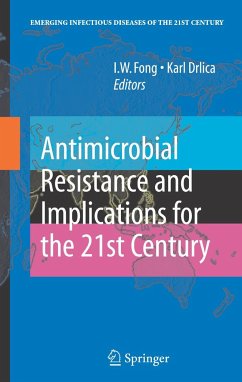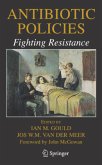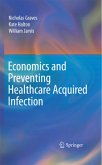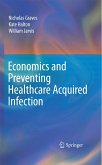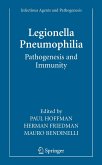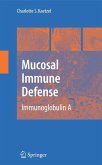Antimicrobial resistance can develop in any type of microbe (germ). Microbes can develop resistance to specific medicines. A common misconception is that a person's body becomes resistant to specific drugs. However, it is microbes, not people that become resistant to the drugs. Drug resistance happens when microbes develop ways to survive the use of medicines meant to kill or weaken them. If a microbe is resistant to many drugs, treating the infections it causes can become difficult or even impossible. Someone with an infection that is resistant to a certain medicine can pass that resistant infection to another person. In this way, a hard-to-treat illness can be spread from person to person. In some cases, the illness can lead to serious disability or even death.
This comprehensive, up-to-date volume aims to define issues and potential solutions to the challenges of antimicrobial resistance. The chapter authors are leading international experts on antimicrobial resistance among a variety of bacteria (Streptococcus pneumoniae, enteroccoci, staphylococci, gram-negative bacilli, mycobacteria species) viruses (HIV, herpesviruses), and fungi (Candida species, fusarium etc.). The chapters will explore the molecular mechanisms of drug resistance, the immunology and epidemiology of resistance strains, clinical implications and implications on research and lack thereof, and prevention and future directions. This volume will also describe the steps that researchers are taking to develop molecular methods for detecting resistance; develop drugs and other means to deal with newly-resistant organisms. A special chapter to address the issues on strategies to limit antimicrobial resistance propagation will be included in this volume.
This comprehensive, up-to-date volume aims to define issues and potential solutions to the challenges of antimicrobial resistance. The chapter authors are leading international experts on antimicrobial resistance among a variety of bacteria (Streptococcus pneumoniae, enteroccoci, staphylococci, gram-negative bacilli, mycobacteria species) viruses (HIV, herpesviruses), and fungi (Candida species, fusarium etc.). The chapters will explore the molecular mechanisms of drug resistance, the immunology and epidemiology of resistance strains, clinical implications and implications on research and lack thereof, and prevention and future directions. This volume will also describe the steps that researchers are taking to develop molecular methods for detecting resistance; develop drugs and other means to deal with newly-resistant organisms. A special chapter to address the issues on strategies to limit antimicrobial resistance propagation will be included in this volume.

